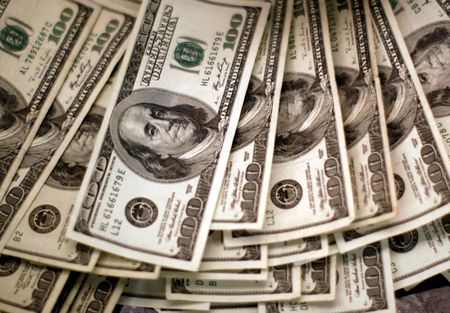
By Wayne Cole
SYDNEY (Reuters) – The dollar was carrying a couple of bruises on Wednesday as Federal Reserve officials played down the chance of a half point rate hike in March and a rally in global equity markets tarnished some of its safe haven allure.
Stellar results from Alphabet after the bell saw that stock surge 7% and lift Wall Street futures, benefiting risk sensitive currencies including the Australian and New Zealand dollars.
The euro looked steadier at $1.1270, having risen 0.3% overnight and further away from last week’s 20-month trough at $1.1122. A break above $1.2300 resistance would help counter the recent bearish trend.
The dollar was back at 114.70 yen, after dropping 0.4% overnight and away from last week’s top at 115.68 which now marks major resistance. Still, it remains comfortably above key support around 113.47.
Reflecting that pullback, the dollar index eased to 96.272 and off its recent 19-month high of 97.441.
The euro got a lift from rising EU yields, with German 10-year yields hitting their highest since mid-2019 after lofty inflation readings stoked speculation the European Central Bank might have to tighten early.
“A surprisingly high inflation print in Germany has driven another leg up in euro-zone rate expectations, and while we don’t expect a major shift at the ECB policy meeting on Thursday, the direction of travel appears clear,” said Jonas Goltermann, a senior market economist at Capital Economics.
Likewise, British 10-year yields reached levels last seen in early 2019 ahead of an expected rate hike from the Bank of England this week.
That saw the pound push up at $1.3522 after three sessions of gains.
All this means the Fed is not the only hawkish central bank in town, restraining the dollar. Indeed, Fed officials have been pushing back against market talk they might hike by 50 basis points in March.
St. Louis Fed President James Bullard, a noted hawk, on Tuesday said he would argue for rate rises in March, May and June, but did not favour a half-point move.
Capital Economics’ Goltermann argued the market was still underestimating how high U.S. rate would have to go to rein in inflation.
Fed fund futures imply a peak around 1.75-2.0% which would be very low by historical standards and would likely still leave real rates in negative territory.
“We think the terminal rate in the U.S. currently discounted in money markets is too low, both in absolute terms and relative to equivalent rates elsewhere,” he added.
“This is the key reason why we think the greenback will eventually resume its rise.”
(Reporting by Wayne Cole; Editing by Lincoln Feast.)

